If you’re tired of Etsy’s fees, rules, or lack of control, you’re not alone.
As someone who’s been in the print-on-demand game for over a decade, I’ve used almost every platform out there. This isn’t theory. This is real-world experience from testing, selling, and scaling across multiple storefronts.
Quick answer: The best Etsy alternatives for print-on-demand sellers are Shopify, Redbubble, Zazzle, TeePublic, Big Cartel, and Gumroad.
Each offers different levels of control, traffic, fees, and POD compatibility. Shopify gives you the most freedom, while platforms like Redbubble and TeePublic offer plug-and-play passive selling.
Let’s break down the options and figure out what’s actually worth your time.
TL;DR: Best Etsy Alternatives for Print-on-Demand Sellers
| Platform | POD Integration | Built-In Traffic | Branding Control | Monthly Cost | Best For |
|---|---|---|---|---|---|
| Shopify | Yes (Printful, Printify, Gelato, etc.) | No | Full control | From $39/month | Sellers ready to build and scale a real brand |
| Redbubble | Yes (native POD) | Yes | Very limited | Free | Artists wanting passive sales with no setup |
| Zazzle | Yes (native POD) | Yes | Limited | Free | Creators targeting custom events and seasonal items |
| TeePublic | Yes (native POD) | Moderate | Minimal | Free | Niche t-shirt designers wanting easy exposure |
| Big Cartel | Manual or basic POD plugins | No | Basic control | Free–$9.99/month | Indie creators with small catalogs under 50 products |
| Gumroad | No auto-POD | No | Simple control | Free–fees-based | Digital product sellers and membership creators |
| Squarespace | Via integrations | No | High visual control | From $23/month | Visual brands and service-based businesses |
| Wix | Via integrations | No | Full control | From $27/month | Beginners who want flexibility with design |
| Amazon Handmade | No auto-POD | Massive | None | 15% per sale | Handmade sellers with serious inventory ready |
| Bonanza | Manual or import from Etsy | Low | Partial | 3.5% fee per sale | Etsy sellers looking for low-effort diversification |
Why Etsy Isn’t Worth It for POD Sellers Anymore
Etsy used to be a goldmine for print-on-demand. But over the years, the platform’s gone from creator-friendly to profit-squeezing.
Here’s what’s pushing serious sellers to find better alternatives like Shopify:
1. The Fees Stack Up Fast
Etsy’s fee structure is complicated and expensive:
- 6.5% transaction fee
- 3% + $0.25 payment processing fee
- $0.20 listing fee (every 4 months)
- 12-15% cut on offsite ads
By the time a customer buys your shirt, mug, or hoodie, you’re already losing 20-25% of your margin.
And that doesn’t include your actual product and fulfillment costs from Printful or Printify.
2. Offsite Ads Are Not Optional
Once you make $10,000 a year, Etsy locks you into offsite ads. Even if they don’t convert well, you’re stuck paying 12-15% extra on those orders. You can’t opt out.
For print-on-demand, where margins are already tight, this is brutal.
3. You Don’t Control the Customer Experience
Etsy owns the customer relationship, not you. You don’t get emails, you don’t build your brand freely, and one policy change can shut you down overnight.
If you want to build a long-term business, this is a major red flag.
Verdict: Etsy’s Still a Decent Starting Point, but It’s Not Built for Scale
If you’re just testing products or learning the ropes, Etsy might work. But for anyone serious about profit and brand control, you’re going to outgrow it fast.
What Print-on-Demand Sellers Actually Need in an Alternative
You don’t just need a new place to list products.
You need a platform that actually gets the way print-on-demand works—and one that helps you build something sustainable.
After a decade in the game, I can tell you that most sellers don’t quit because of bad designs or pricing. They quit because they picked the wrong platform to grow on.
Here’s what to look for before you jump ship from Etsy:
1. POD Compatibility
This is non-negotiable. You want platforms that plug directly into your POD supplier, so your orders are automatically synced, fulfilled, and shipped.
Look for seamless integrations with:
- Printful – Clean UI, great branding, global fulfillment centers
- Printify – Lower base costs, huge supplier network
- Gelato – Great for international delivery and eco-conscious sellers
- Gooten – Less common, but decent margins and enterprise options
Why it matters:
Manual order entry burns time and leads to mistakes. And once you’re processing dozens (or hundreds) of orders a week, you can’t afford to mess around. Automation is what lets you focus on sales and scaling.
Tip: Before committing, test the platform’s integration by placing a sample order. Some platforms say they “integrate” but still have friction in syncing SKUs or tracking numbers.
2. Easy Storefront Customization
This is where Etsy really boxes you in. You get a product photo, a title, and maybe a banner—and that’s it. You’re selling in their store, not yours.
With the right alternative, you should be able to build a brand that feels like yours from the first click.
Here’s what to look for:
- Custom domain name – Build trust with a .com that’s yours
- Design flexibility – Create product pages, landing pages, about pages
- Email capture – Pop-ups, sign-up forms, discount codes
- Upsell/cross-sell options – Recommend more products during checkout
- Mobile responsiveness – Your store has to look good on phones
Why it matters:
Brand is the difference between a $12 t-shirt and a $30 one.
People don’t just buy your product—they buy your story, your vibe, and your experience. Your storefront should feel like walking into your own curated shop, not a marketplace of competitors.
Tip: If the platform doesn’t let you change the layout, test different images, or collect emails easily—it’s going to hold you back.
3. Better Profit Margins
Margins are everything in POD. With Etsy’s fee structure, it’s not unusual to lose 20-25% of your sale before production costs even hit.
On alternative platforms, your goal should be to keep total fees under 10-15%. That gives you room to invest in growth—ads, email, content, etc.
Keep an eye on these costs:
- Platform subscription fees – Some are free, some start at $29–$79/month
- Transaction fees – Stripe, PayPal, or in-house processors
- App/plugin charges – Add-ons for upsells, email, reviews, etc.
Let’s say you’re selling a hoodie for $50:
- Etsy takes ~25% → $12.50
- Shopify + Printful (with proper settings) can keep it closer to $5–$7 total in fees
That difference adds up fast—especially once you’re selling hundreds of units a month.
Why it matters:
Your profit is what funds ads, gives you breathing room, and turns this into a real business. High fees kill momentum and motivation fast.
Tip: Build a profit calculator and compare platforms using the same product and price. Run the numbers before you commit.
4. Traffic and Marketing Options
This is where the biggest difference lies between marketplaces and independent platforms.
Some platforms, like Redbubble or TeePublic, bring traffic to you. But you’re playing in their world—limited control, limited tools, limited customer data.
Other platforms, like Shopify or Wix, give you full freedom—but it’s up to you to bring the eyeballs.
Here’s what you need to consider:
Built-in Traffic Platforms:
- Redbubble
- Zazzle
- TeePublic
- Amazon Handmade
You Drive the Traffic Platforms:
- Shopify
- Big Cartel
- Squarespace
- Gumroad
Hybrid Platforms:
- Bonanza (small marketplace + customization)
- Wix (basic SEO + custom store)
Tip: No matter where you start, work toward owning your own traffic. That’s how you build a POD business that lasts.
Verdict: Choose Based on Your Current Skill and Traffic Levels
If you’re just starting out, go for platforms that give you a head start with traffic. You’ll sacrifice some control, but it’ll help you test products and learn what sells.
If you already have an audience—or you’re ready to build one—go with a platform that gives you full control.
Top 10 Best Etsy Alternatives for POD Sellers
Let’s walk through the best options based on my own experience, seller feedback, and real testing.
1. Shopify
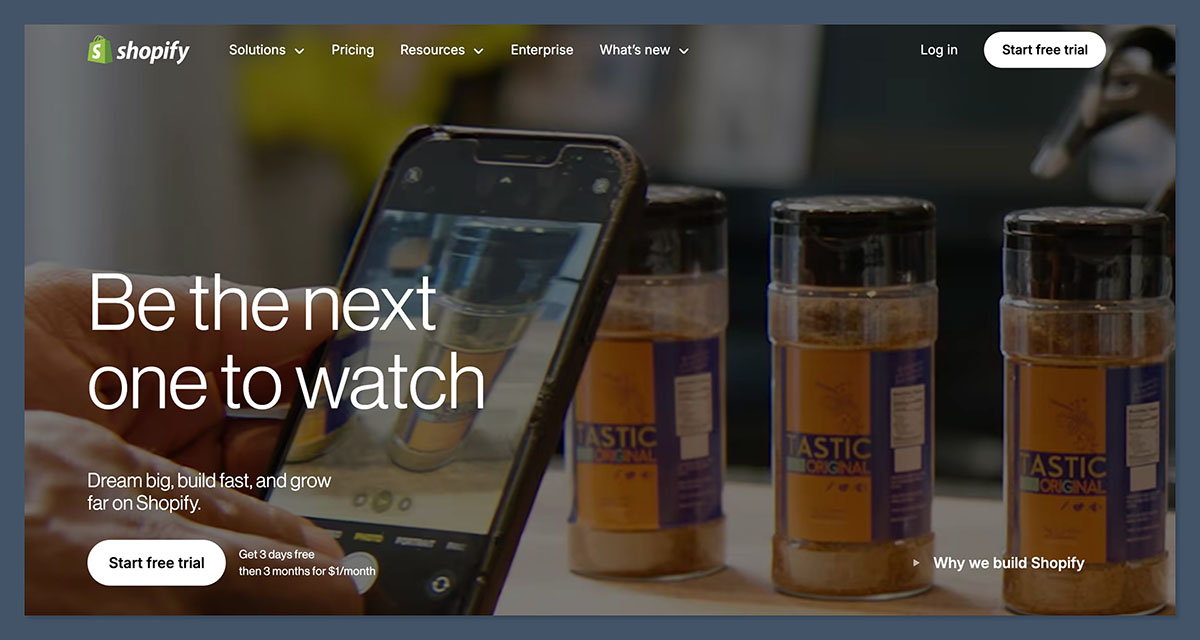
Shopify is the platform I recommend the most when someone wants to take full control of their online store. It’s not a marketplace — it’s your own ecommerce site, built your way.
You manage your products, your customers, your branding — everything. Whether you’re selling physical goods, digital products, or running print-on-demand through apps like Printful or Gelato, Shopify handles it all.
I’ve worked with sellers who started with a single handmade product and scaled to full-time income using Shopify. It gives you structure without locking you into someone else’s system.
Pros
- Total control over branding, checkout, and product experience
- Massive app ecosystem — add upsells, subscriptions, POD, affiliates
- Works for both beginners and advanced sellers
- Scales well with SEO, paid traffic, email, and wholesale
Cons
- You need to bring your own traffic
- Monthly costs add up if you use a lot of apps
- More responsibility — you’re managing everything
- Can be overkill if you just want to test one product
Best for
Anyone who wants to build a real business — not just sell a few items on the side. Shopify works best for sellers who want full ownership of their store and are ready to put in the work to grow traffic, build a brand, and retain customers.
Why Choose Shopify
When someone tells me they’re done playing Etsy’s game — done with fees, rules, and lost control — this is where we go.
I’ve seen people double their margins overnight just by moving to Shopify. It’s not about quick sales — it’s about long-term equity. You’re building something you fully own, and that’s a huge shift.
Plus, with all the integrations available (POD, dropshipping, email marketing, CRMs), it can grow with you. Whether you’re just getting started or managing 6-figure sales, Shopify handles both ends well.
Price
Starts at $39/month for the Basic plan. Most serious sellers land between $39–$105/month depending on features. Add-ons like apps or third-party tools may increase total costs, but you’re trading that for control and margin.
2. Redbubble
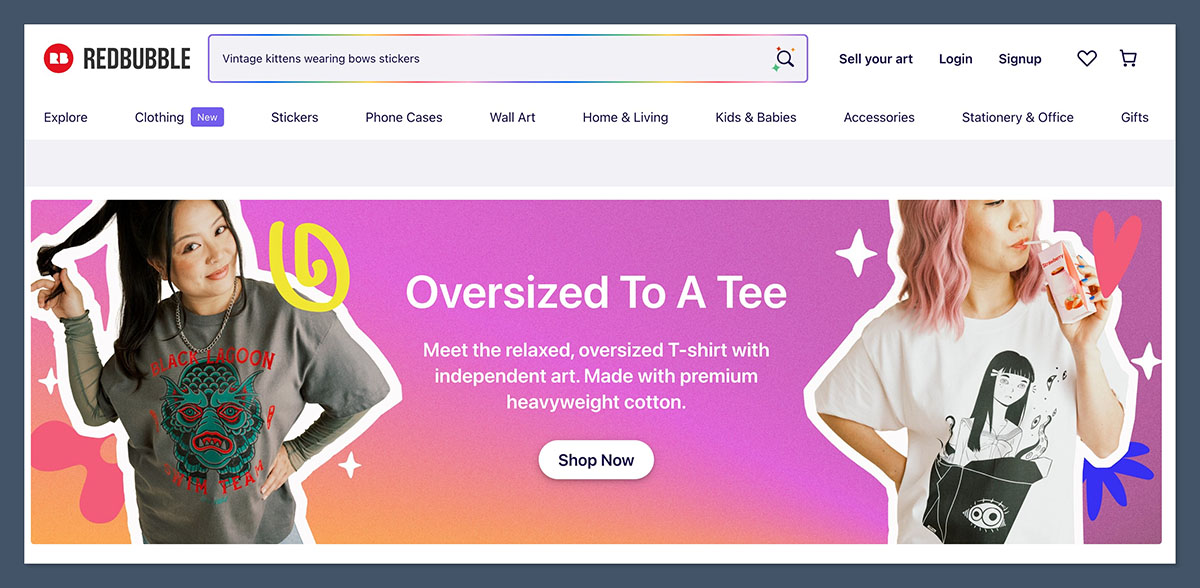
Redbubble is one of the easiest ways to get your designs online and earning.
It’s especially good for graphic designers, illustrators, and digital artists who don’t want to deal with order fulfillment, customer emails, or building a full storefront.
If you’re looking for a plug-and-play POD option where you just upload your art and let the platform handle the rest, Redbubble delivers.
I’ve used it for years to test new ideas, validate niches, and build a stream of passive income without investing heavily in marketing or setup.
That said, there are real trade-offs — and Redbubble is not designed for long-term brand building.
Pros
The biggest advantage with Redbubble is the zero-effort entry. You don’t need a domain, a logo, or even a full product strategy to get started.
Here’s what makes Redbubble appealing:
- Built-in traffic
Redbubble attracts over 30 million monthly visitors, many of whom are searching for gifts, art prints, and niche designs. If your art hits the right keywords or categories, you can get sales without running any ads. - Effortless setup
You create an account, upload your design, and apply it to products like T-shirts, stickers, mugs, posters, and phone cases. It takes less than 30 minutes to publish a full product catalog. - No fulfillment headaches
Redbubble handles printing, shipping, and customer service. You just collect royalties. There’s no need to manage inventory, track orders, or answer customer emails. - Good for experimentation
If you want to test a trend, seasonal product, or new niche, Redbubble is perfect for that. It’s low risk, fast to launch, and gives you data on what gets clicks and sells.
Tip: Use Redbubble to identify your best-performing designs, then move the winners to Shopify where you can build higher margins and brand around them.
Cons
For all its ease, Redbubble has serious limitations — especially if your goal is to build a business instead of just a side income.
Here’s where it falls short:
- You don’t control pricing
Redbubble sets base prices for every product. You can adjust your markup (usually 10–30%), but your control is limited. In some cases, raising your margin too much makes your product uncompetitive in search. - No customer ownership
Redbubble keeps all buyer data. You don’t get email addresses or any way to follow up with customers. This kills your ability to build a list, run retargeting ads, or generate repeat purchases. - Low margins
Expect to earn 15–20% of the sale price — sometimes even less on promotional sales or international orders. That means you might earn $3–$5 on a $25 T-shirt. - No real branding
Your store lives inside Redbubble, next to thousands of other sellers. There’s no unique checkout, no brand experience, and no way to stand out beyond your thumbnail and shop name. - Algorithm dependence
Like Etsy, Redbubble runs on an internal search engine. If your listings don’t rank or your niche is too competitive, your sales will suffer — and you can’t run ads to fix it.
Verdict: Great Passive Income Channel, But Not a Business Foundation
Redbubble is a solid addition to your POD strategy — but it shouldn’t be the core of your business.
It’s ideal for:
- Testing designs and niches
- Generating passive sales with minimal effort
- Artists who don’t want to manage stores or customer support
But if you want to grow a brand, build an email list, or control your pricing and experience, you’ll hit a ceiling fast.
Bottom line: Use Redbubble as a low-maintenance side channel. Then take your winning products and scale them on a platform where you call the shots.
3. Zazzle
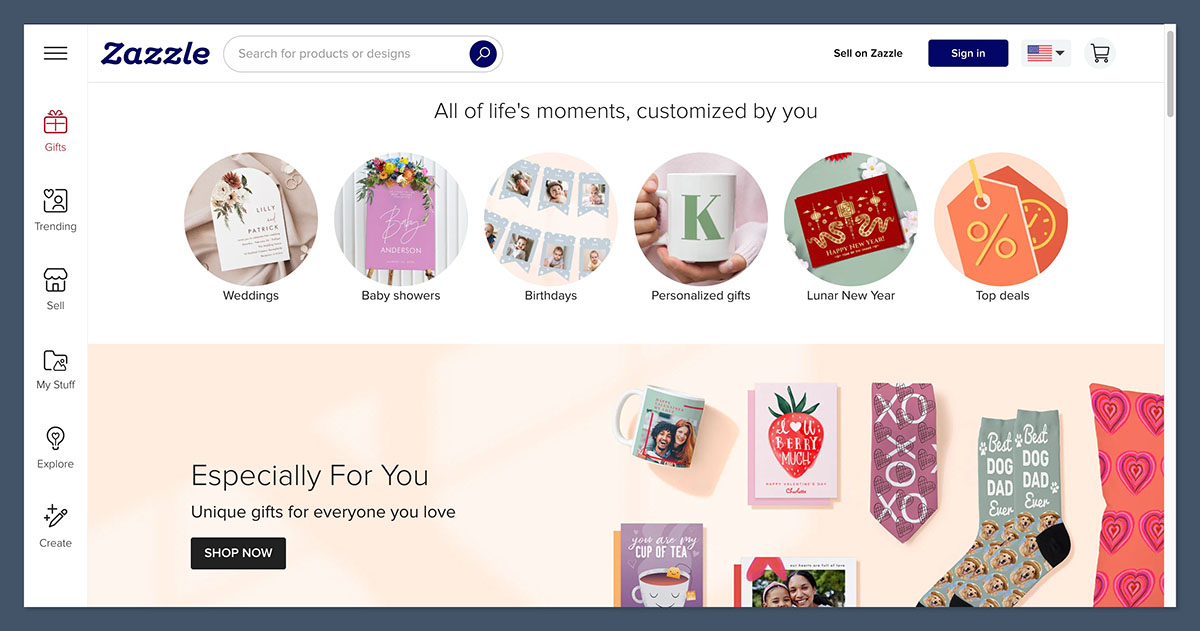
Zazzle is another print-on-demand marketplace, but it has a much broader product range than most. I’ve worked with designers who’ve used it to get their art onto everything from wedding invitations to skateboards. It’s royalty-based, so you don’t handle fulfilment or set final prices.
Pros:
- Wide range of customisable products
- Global audience
- No fulfilment or shipping required
- Built-in customer base
Cons:
- You don’t set your prices directly
- Marketplace gets the customer relationship
- Royalties can feel low after Zazzle’s cut
Best for:
Graphic designers and illustrators who want their work on niche, often customisable products — things like stationery, party supplies, or gifts.
Why Choose Zazzle:
This one comes up when a designer wants to monetise their work across a huge variety of products without touching logistics. It also does well seasonally — weddings, holidays, events — so it’s useful for creators with time-sensitive designs.
Price:
Free to join. You set a royalty (usually 5–15%), and Zazzle builds pricing around that.
4. TeePublic
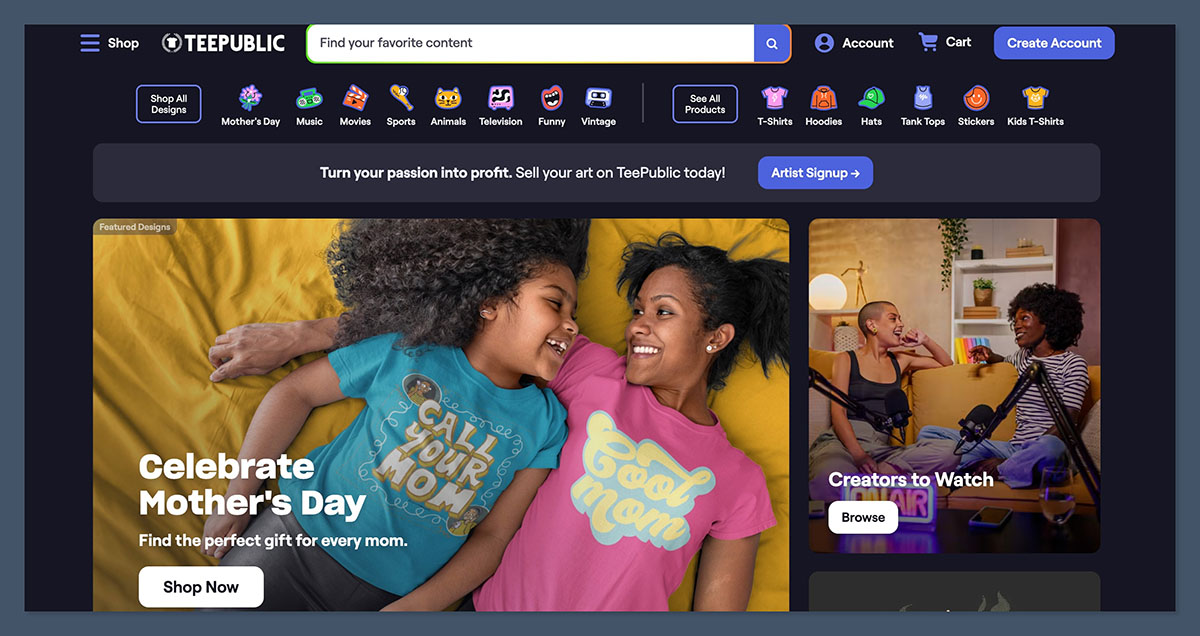
TeePublic is one of the easiest platforms I’ve used for selling graphic apparel. It’s similar to Redbubble but laser-focused on t-shirts and clothing. You upload your design, they put it on shirts, hoodies, mugs, and a few other items. They handle printing, shipping, and customer service. You don’t touch a single package.
Pros:
- Super quick to set up
- They manage production and fulfilment
- No upfront costs
- Decent organic traffic for niche designs
Cons:
- Profit margins are low by default
- Little room to customise your storefront
- Design approval process can slow things down
- You don’t build your own customer base
Best for:
If you’re focused on t-shirts or apparel and want a done-for-you solution, TeePublic is one of the smoother ways to get started. Great for designers with a niche or viral concept.
Why Choose TeePublic:
When someone comes to me wanting to sell shirts with minimal effort, this is often where I start. You don’t need to market heavily — TeePublic’s marketplace does a decent job driving eyeballs. It’s especially useful if you’ve got bold, niche, or fan-art-style designs.
Price:
It’s free to use. TeePublic sets pricing and pays royalties, which are usually higher during sales events — and that’s most of the time.
5. Big Cartel
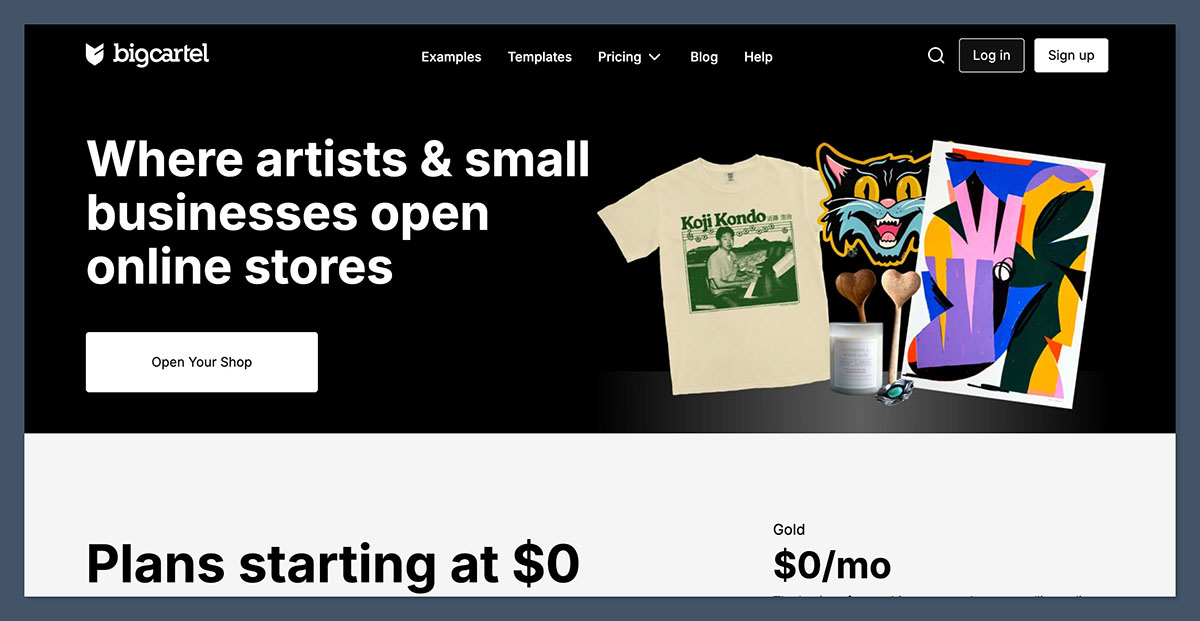
Big Cartel is a simple store builder designed specifically for small creators. I’ve worked with artists, ceramicists, and jewellery makers who don’t need a ton of features — just a clean storefront that works. It’s not trying to be Shopify. It’s focused and lightweight.
Pros:
- Free plan available
- No listing or transaction fees
- Minimalist backend, easy to learn
- No bloat — what you see is what you get
Cons:
- Not ideal for large product catalogs
- Lacks advanced features (like abandoned cart emails or upsells)
- Limited design flexibility
- Doesn’t scale well
Best for:
Great for creators selling under 50 products who want something that feels more like their own site than Etsy — but don’t want the complexity of Shopify.
Why Choose Big Cartel:
Whenever I see someone overwhelmed by tech or just trying to test a new product line, this is the tool I reach for. It does the job without friction. Perfect for side hustlers and indie sellers who want to keep things light.
Price:
Free for up to 5 products. Paid plans start at $9.99/month.
6. Gumroad
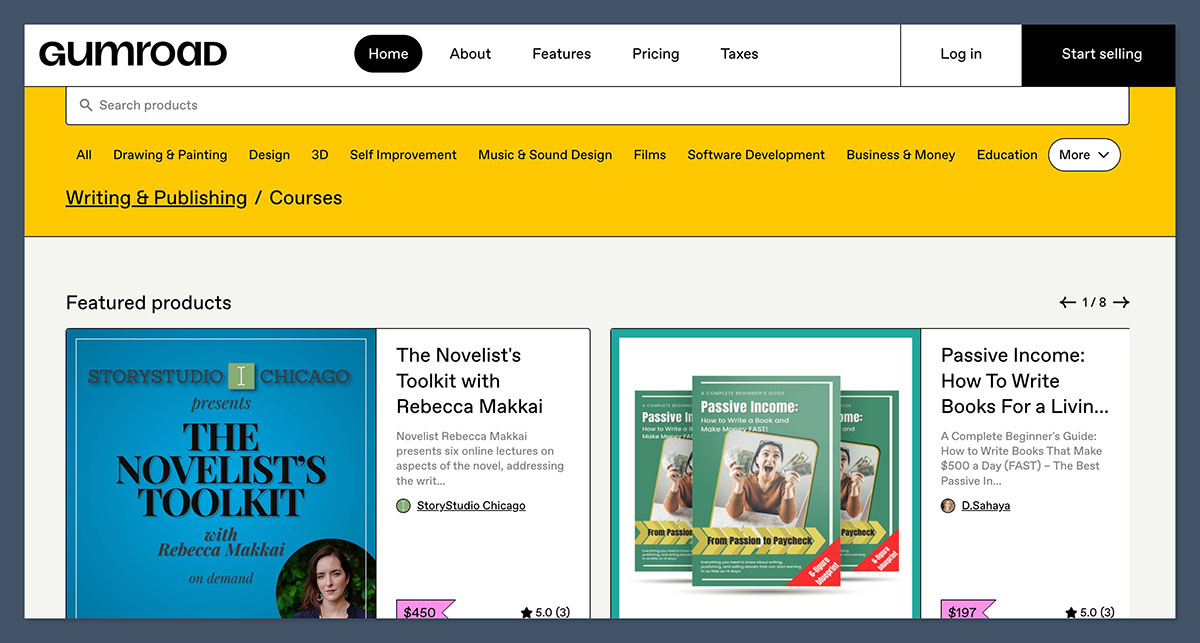
I’ve set up dozens of digital product shops on Gumroad — it’s built for creators selling things like ebooks, templates, audio, video, or even memberships. You don’t need a website. You don’t need any tech skills. Just upload your file, write a description, and you’re live.
Pros:
- Instant setup
- Handles VAT, taxes, and payments
- Clean checkout experience
- Supports pay-what-you-want pricing and memberships
Cons:
- Higher fees on the free plan
- You’re not building a full ecommerce brand
- Basic analytics and design controls
- Not designed for physical products
Best for:
Anyone selling digital products or subscriptions. If you’re a designer, writer, coach, or indie creator — Gumroad just works.
Why Choose Gumroad:
If someone needs to start selling today with zero overhead, this is where I point them. I’ve seen creators make thousands just from a few product links on Twitter or email using Gumroad. You don’t need anything fancy — just something worth paying for.
Price:
Free to start. 10% fee per sale until you hit $1,000/month in revenue, then fees drop on the paid plan.
7. Squarespace
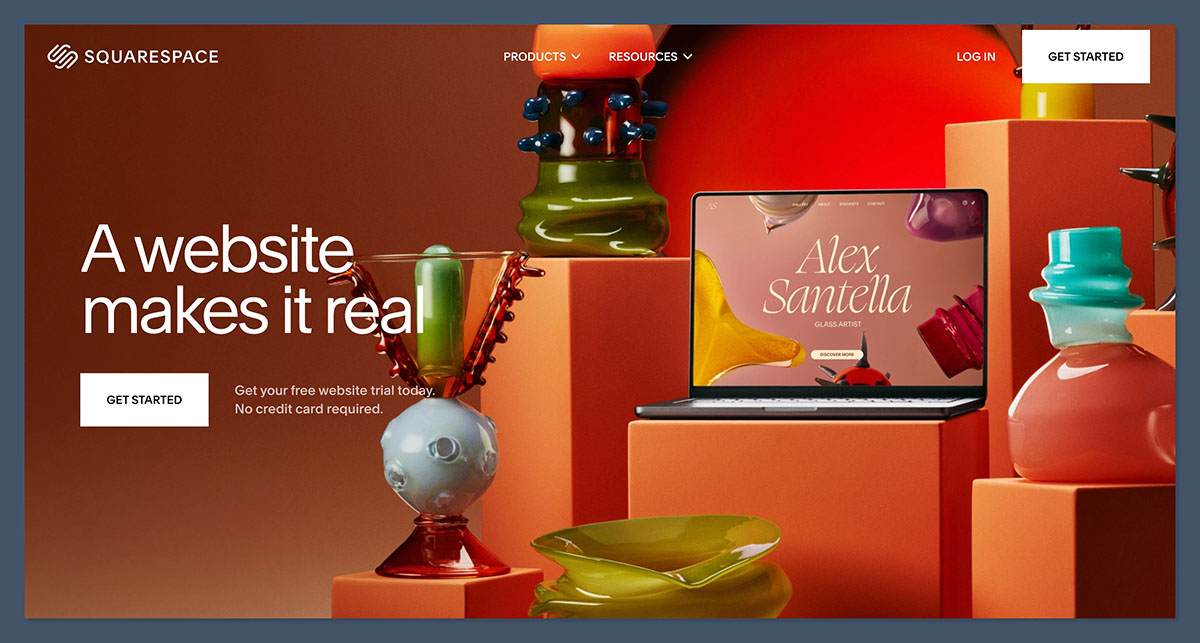
Squarespace is a website builder with built-in ecommerce. I’ve used it a lot with artists and service-based businesses that need something polished and visual. The templates are beautiful, and the setup is smooth if you’re not too picky about custom features.
Pros:
- Visually stunning templates
- Ecommerce and blog under one roof
- Hosting and SSL included
- Decent support for physical products
Cons:
- Less flexibility than Shopify
- Some limitations with integrations
- Can feel slow if your store gets too big
Best for:
Ideal for creators who care about design — photographers, stylists, visual artists — and want a store that looks professional right out of the box.
Why Choose Squarespace:
Whenever someone tells me their brand is highly visual, and they need a portfolio + store combo, I go here. It’s also solid for service businesses that sell digital products or take bookings.
Price:
Business plans with ecommerce start at $23/month.
8. Wix
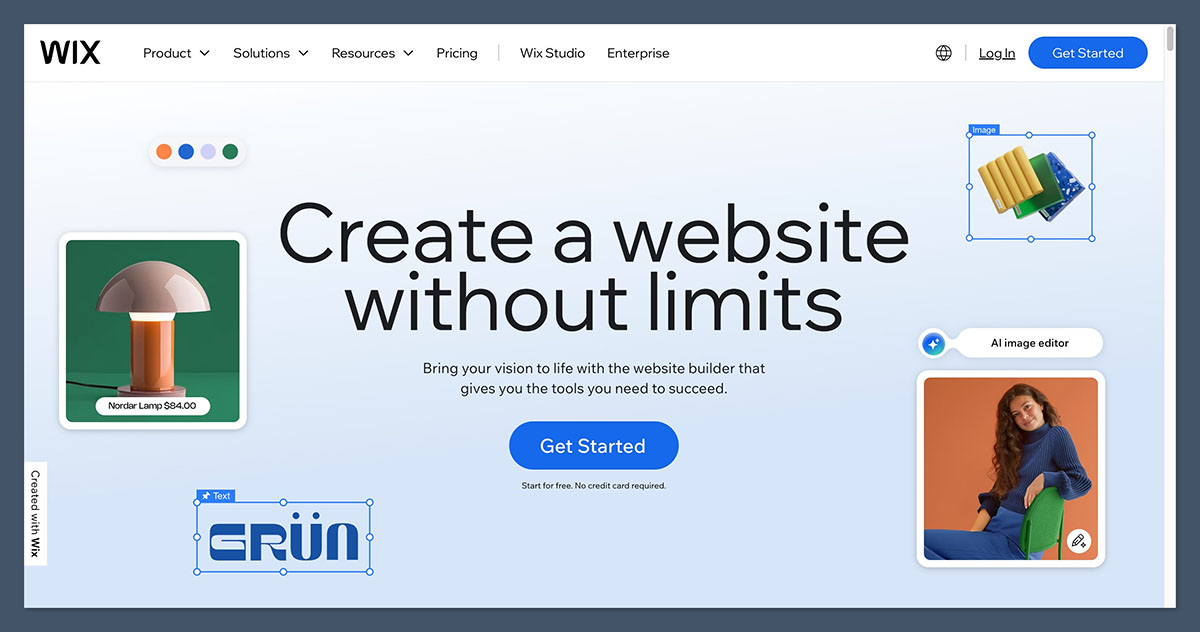
Wix is a drag-and-drop website builder that can be turned into a full ecommerce store with a few clicks. I’ve helped plenty of first-timers use Wix to launch their first product or course. It’s flexible, customisable, and beginner-friendly.
Pros:
- No coding needed
- Tons of templates
- App store offers a lot of added functionality
- Works well for small-to-medium stores
Cons:
- Can get bloated if you go overboard with apps
- Not the fastest loading times
- SEO can be clunky to manage
Best for:
Beginners who want to design their site their way and keep things simple. Good for selling physical or digital products, courses, or services.
Why Choose Wix:
If someone’s nervous about the tech side but wants control over how their store looks, I steer them toward Wix. It’s also a great stepping stone before moving up to something like Shopify.
Price:
Business plans start at $27/month.
9. Amazon Handmade
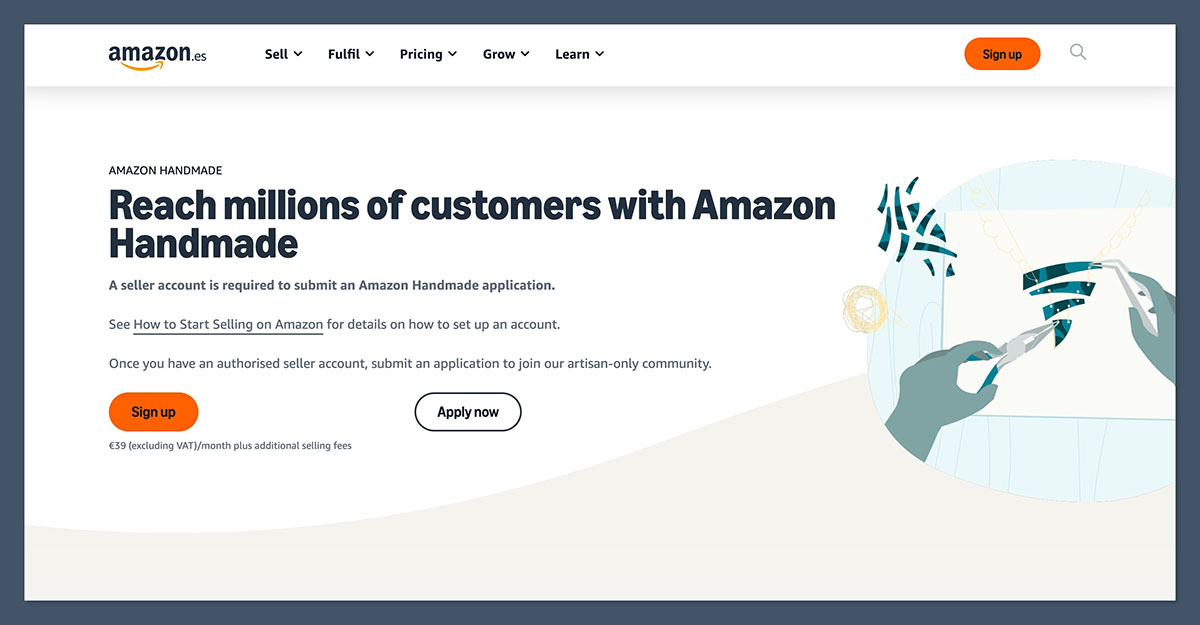
Amazon Handmade gives artisans a spot to sell handcrafted goods directly on Amazon’s massive platform. I’ve worked with multiple sellers who wanted more reach without moving into full-blown mass production, and this was a solid fit. You still need to apply to join, but once you’re in, you’re listed alongside products getting millions of views.
Pros:
- Huge traffic potential
- Trusted by buyers (especially in the US and UK)
- Fulfilment by Amazon (FBA) is an option
- Great for makers who already do decent volume
Cons:
- Strict seller rules
- Long approval process
- 15% referral fee — not cheap
- No direct customer access
Best for:
Experienced sellers with quality handmade products who want to tap into Amazon’s infrastructure and audience. It’s best for people already producing at a consistent pace.
Why Choose Amazon Handmade:
I only recommend this to sellers who are ready to scale. You’re going to deal with tighter rules and a cut of your margin, but in return, you get exposure and trust. For some handmade sellers, it’s the only marketplace that drives more revenue than Etsy.
Price:
No monthly subscription if you’re accepted into Handmade. 15% fee per sale. FBA costs extra.
10. Bonanza
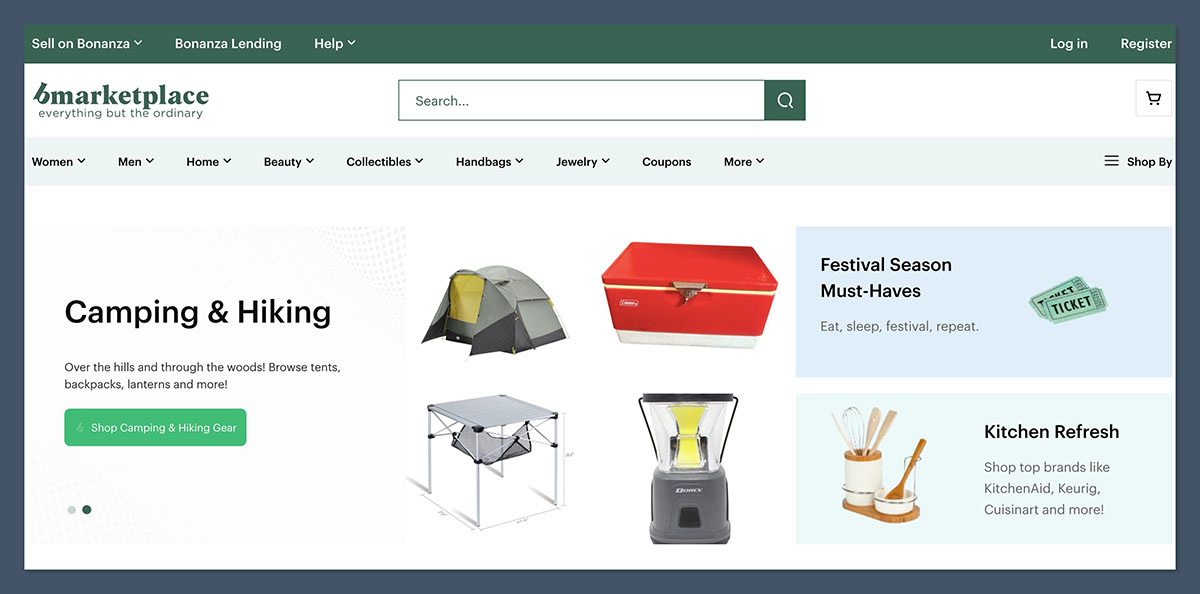
Bonanza is a lesser-known marketplace that often flies under the radar. I’ve helped Etsy sellers cross-post their listings here to pick up extra sales without much work. It’s easy to import products and get started, and it doesn’t nickel-and-dime you with fees.
Pros:
- Super simple Etsy integration
- Lower fees than most marketplaces
- Flexible advertising options
- Good support for unique or niche products
Cons:
- Less buyer traffic
- Outdated interface
- Marketplace doesn’t have strong brand loyalty
Best for:
Sellers who want to diversify without rebuilding everything from scratch. It works especially well as a backup sales channel for Etsy or eBay users.
Why Choose Bonanza:
When a seller is already doing OK on Etsy and wants to hedge their risk, this is often step one. The extra effort is minimal, and the platform rewards high-quality listings with decent exposure — especially in underserved niches.
Price:
3.5% final value fee, with optional ad boosts if you want more reach. low-risk, low-effort platform that can add incremental revenue to your print-on-demand business. It won’t build your brand, but it can expand your reach without adding much to your workload.
Final Thoughts
Etsy helped a lot of us get started — no question. It was the gateway for many print-on-demand sellers to test ideas, learn customer behaviour, and get those first few sales. But the landscape has changed.
Fees are up. Control is down. And building a brand that lasts means stepping outside of rented space and into a platform that gives you ownership, flexibility, and margin.
If you’re serious about turning your print-on-demand hustle into a sustainable business, you need the right tools.
That doesn’t mean you need to jump straight into the deep end with Shopify, but it does mean you should be thinking about control — control over your pricing, your customer data, your marketing, and your growth.
My Real-World Stack Recommendation
If I were starting from scratch today, here’s exactly what I’d do:
- Build the foundation on Shopify
Start small. Use the basic plan. Connect it to Printful or Printify. Focus on getting your first 10–20 real customers and collecting email addresses from day one. - Layer in low-maintenance marketplaces
Add Redbubble and TeePublic as passive income streams. Use them to test designs and catch extra sales while you build your main brand. - Repurpose content and listings
Import your Shopify or Etsy listings into Bonanza or Storenvy. These won’t drive massive traffic, but they’ll squeeze a little more reach out of the work you’ve already done. - Expand your revenue strategy
Once your store is stable, test digital + physical bundles on Gumroad or explore wholesale via Faire if your products perform well.
This isn’t about chasing the “best” platform. It’s about picking the right stack for where you are right now — and building a setup that supports where you want to go.
If you’re just testing the waters, Etsy or Redbubble are fine. But if you’re in this to build a real POD brand that survives algorithm updates and platform policy shifts, the sooner you gain control of your business, the better.
Final Tip: Choose one primary channel for control (like Shopify), one or two secondary channels for passive sales (Redbubble, TeePublic), and one wildcard channel to experiment with (Gumroad, Faire, or Bonanza).
This keeps your workload manageable while giving your business multiple traffic sources and revenue streams.






